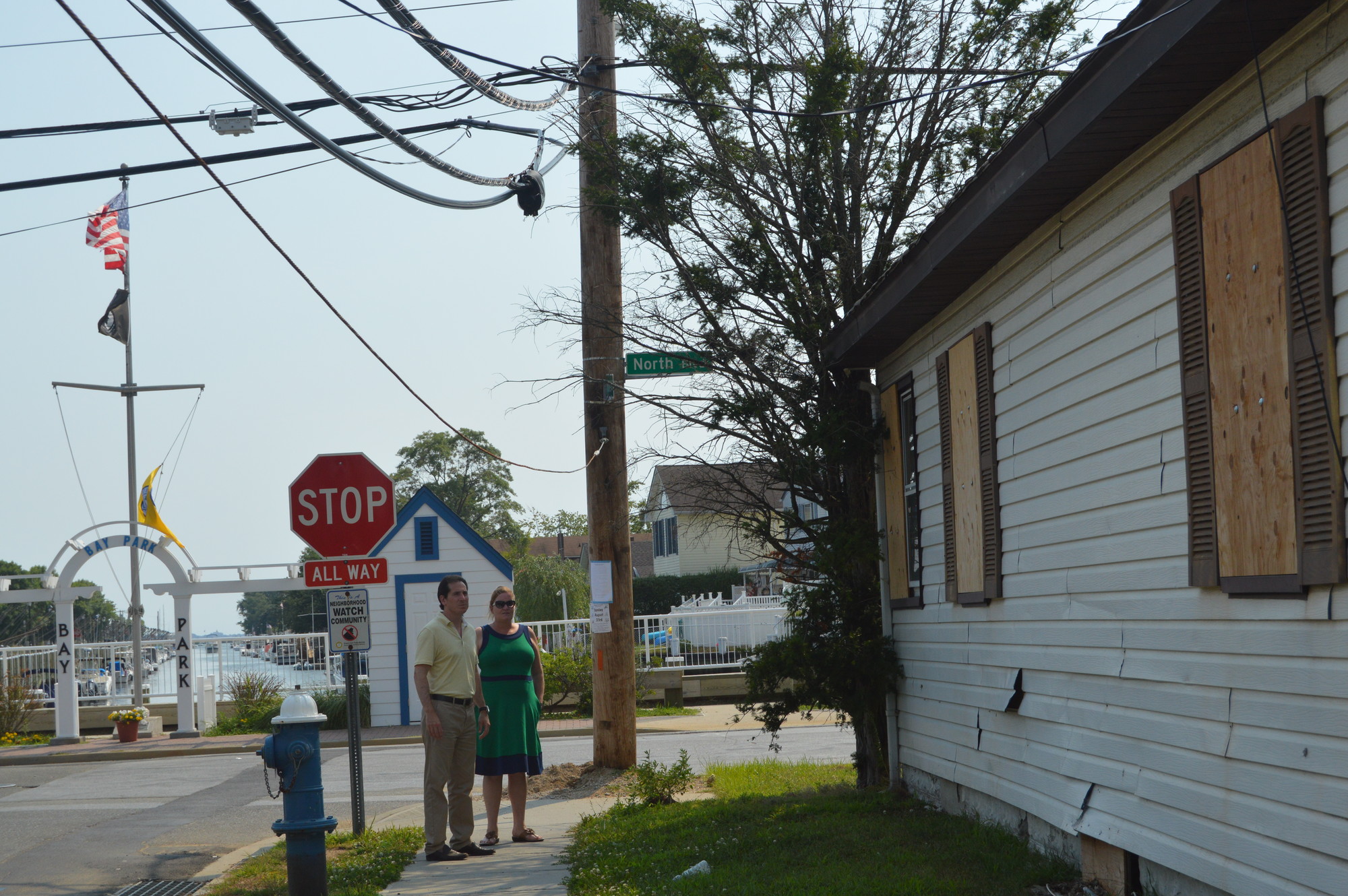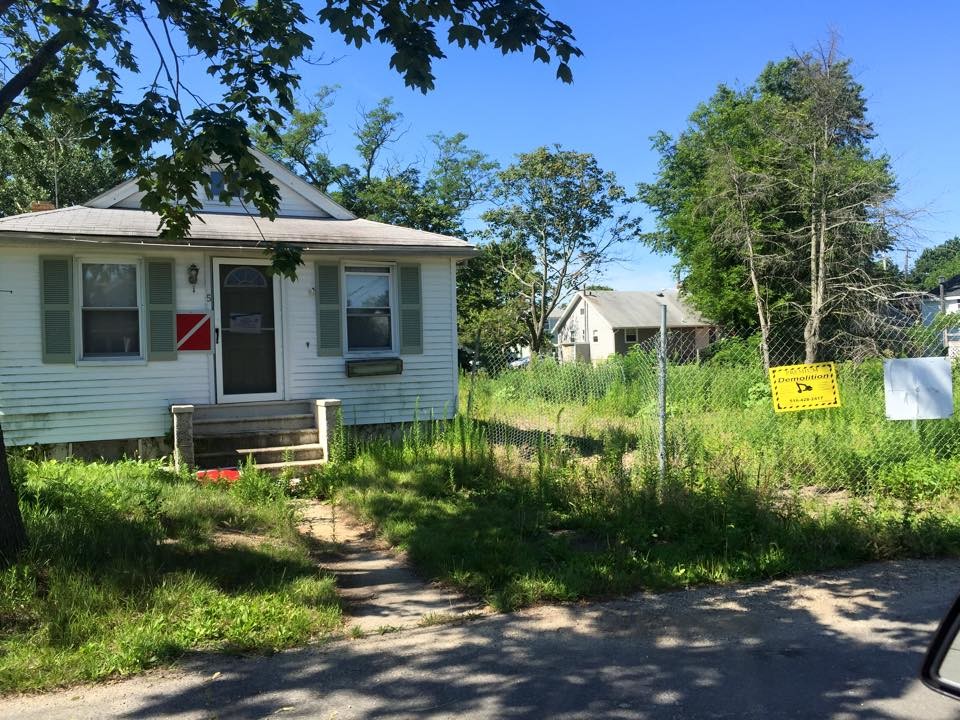‘Zombie’ houses a concern in Bay Park
Problem needs to be addressed at state, county and town levels
Armed with a PowerPoint presentation of 18 “possibly abandoned” homes in Bay Park, two representatives of the11518, a local organization that was formed to help victims of Hurricane Sandy, met with State Assemblyman Todd Kaminsky last week to find out what is being done about the problem, and whether he could help.
Their presentation included photos and addresses of boarded-up and unkempt homes, some of which had signs posted that read “condemned,” “unfit for occupancy,” or “stop work” for not having proper permits. The homes were on North and West boulevards, James, Evans, Martins, West Sperry and Williamson streets, First and Second avenues, and Kirgan and Edwin courts.
Called “zombie” homes, they are properties that have been abandoned. The majority of those in Bay Park are believed to have been occupied by victims of Hurricane Sandy.
“Bay Parkers are troubled by condemned, overgrown homes, some of which haven’t been touched since the storm,” said Liz Daitz, who, along with Dan Caracciolo, met with Kaminsky, a Democrat from Long Beach, last week. “We share their concerns for both their property values and the safety of the blocks we played on growing up — where their children play now.”
“It’s a serious problem,” said Kaminsky. “It’s a mold hazard, a health hazard …. Bay Park has some very beautiful spots, but parts are blighted with these abandoned homes.”
Recently, Kaminsky partnered with Nassau County Executive Ed Mangano to create a database of these properties. This will provide building departments with options on how to proceed once they have identified a bank or property owner who is responsible for a zombie home. Kaminsky suggested that public outcry against a bank found to own a number of such properties could be a powerful tool in the effort to get them cleaned up.
“Mangano and I created this database,” Kaminsky added, “so any citizen can do it, or any municipality … anyone can add a property to the database. We can also see if there are repeat offenders who are not taking care of these properties — like if one bank has 10 properties that have been reported.”









